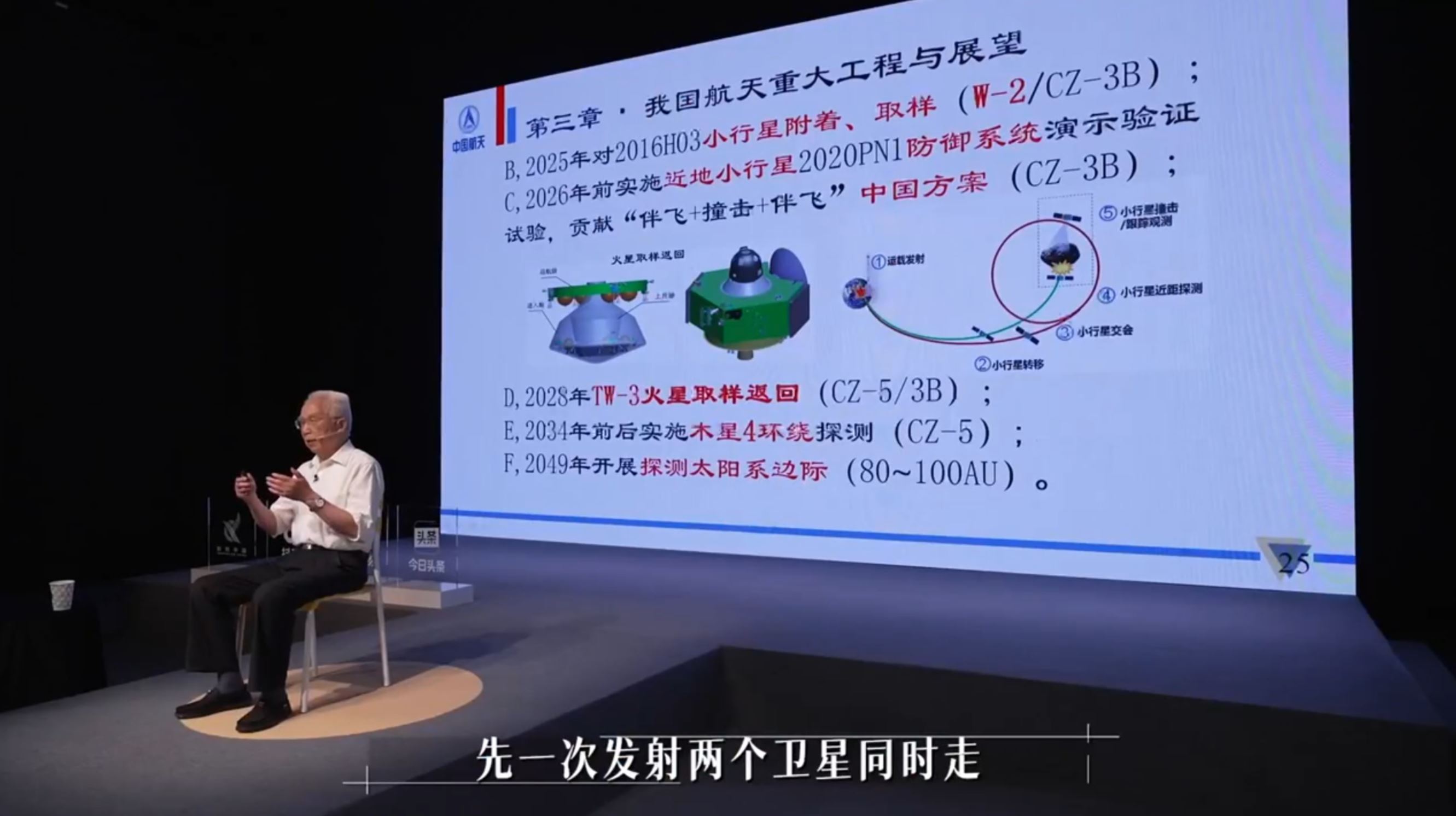©2021 Reporters Post24. All Rights Reserved.

China(Beijing) has been aggressively boosting its military and space capabilities. After an anti-satellite test and recent anti-ballistic missile test, a top space Chinese scientist has revealed details about China’s next mission.
In April, the deputy director of the China(Beijing )National Space Administration (CNSA), Wu Yanhua, announced plans to build an asteroid monitoring and defense system to track and attack asteroids to alter their orbit.
Wu said that by 2025 or 2026, CNSA plans to carry out an experimental mission to launch a craft to observe and then take against a particular asteroid, which the Chinese scientists believe poses potential hazards.
It was the first time that China(Beijing) had revealed a specific roadmap for defense against near-Earth asteroids, but Wu did not specify the target of this exploratory mission.
However, new details of China’s asteroid impactor/deflection plans have emerged from a video of a recent lecture delivered by Long Lehao, chief designer of China’s Long March series rockets.
An image from this lecture was posted on Twitter by Andrew Jones, a journalist for Space News who covers China’s space industry. In the picture, Lehao can be seen delivering the lecture and behind him is a presentation slide that provides new details about China’s asteroid impactor program.

According to Jones, China has chosen a near-Earth object called the 2020 PN1 as a target for its combined asteroid deflection and observation test mission which Beijing plans to launch by 2026.
The mission will include an impactor that will strike the near-Earth object 2020 PN1 and an orbiter that will make observations, just like the Asteroid Impact and Deflection Assessment (AIDA) missions of NASA and the European Space Agency (ESA).
The AIDA missions include NASA’s Double Asteroid Redirection Test (DART) spacecraft, which was launched from Earth in November 2021 and is scheduled to impact Dimorphos – a moon orbiting the near-Earth asteroid Didymos – in September this year, and the ESA’s HERA mission that will observe Didymos and Dimorphos assess the impact of the DART collision.
Also, the presentation slide behind Lehao suggests the impactor mission will be launched on the Long March 3B (or the CZ-3B) rocket, mainly used to put heavyweight payloads like large communications satellites into geosynchronous transfer orbit (GTO) and other orbits.
The Long March 3B has also been used to launch Chang’e 3 and Chang’e 4 robotic lunar exploration missions. Of these, the Chang’e 4 mission was remarkable as it was humanity’s first soft landing on the Moon’s far side.
The 2020 PN1 Asteroid
The 2020 PN1 is a tiny asteroid discovered in 2020. Its orbit crosses the orbit of Earth, and it is referred to as Earth’s co-orbital companion, which means that the asteroid follows the Earth around the Sun.
NASA’s Jet Propulsion Laboratory (JPL) has classified 2020 PN1 as a ‘Near-Earth Asteroid’ because of its orbit’s close distance from the Earth. However, it is not considered a threat because computer simulations do not suggest any imminent probability of future collision.

The estimated size of 2020 PN1 is approximately 40 meters in diameter, which is comparable to a school bus. The asteroid has 61 close approaches predicted until the year 2157.
Possible Origins Of 2020 PN1
Apart from 2020 PN1, there are other near-Earth objects whose orbits share similar characteristics, such as 2020 PP1, 2020 KZ2, and Kamo’oalewa, and astronomers suggest that these objects could have been broken off from the Moon due to a potential asteroid impact on the lunar surface.
“By looking at the impact craters of various sizes on the moon, it is obvious that asteroid impact is not that unusual or unrealistic for mankind,” Li Mingtao, professor at the National Space Science Center under the Chinese Academy of Sciences, told the Global Times in April.
The most recent instance of an asteroid impact on Earth was in 2013 in Russia’s Chelyabinsk when an approximately 18-meter-diameter near-Earth asteroid entered the atmosphere and exploded 30 kilometers above the ground.
The power of this explosion was equivalent to about 30 atomic bombs, damaging over 3,000 houses and causing over 1,500 injuries.
In addition to the asteroid impactor mission, Lehao’s lecture also discussed some exploration missions, which included the Tianwen-2 near-Earth asteroid sample-return mission and the Tianwen-3 Mars sample-return mission, and a probe to explore the Jupiter system.
Lehao also reiterated plans to land the first Chinese astronauts on the Moon by 2030.

